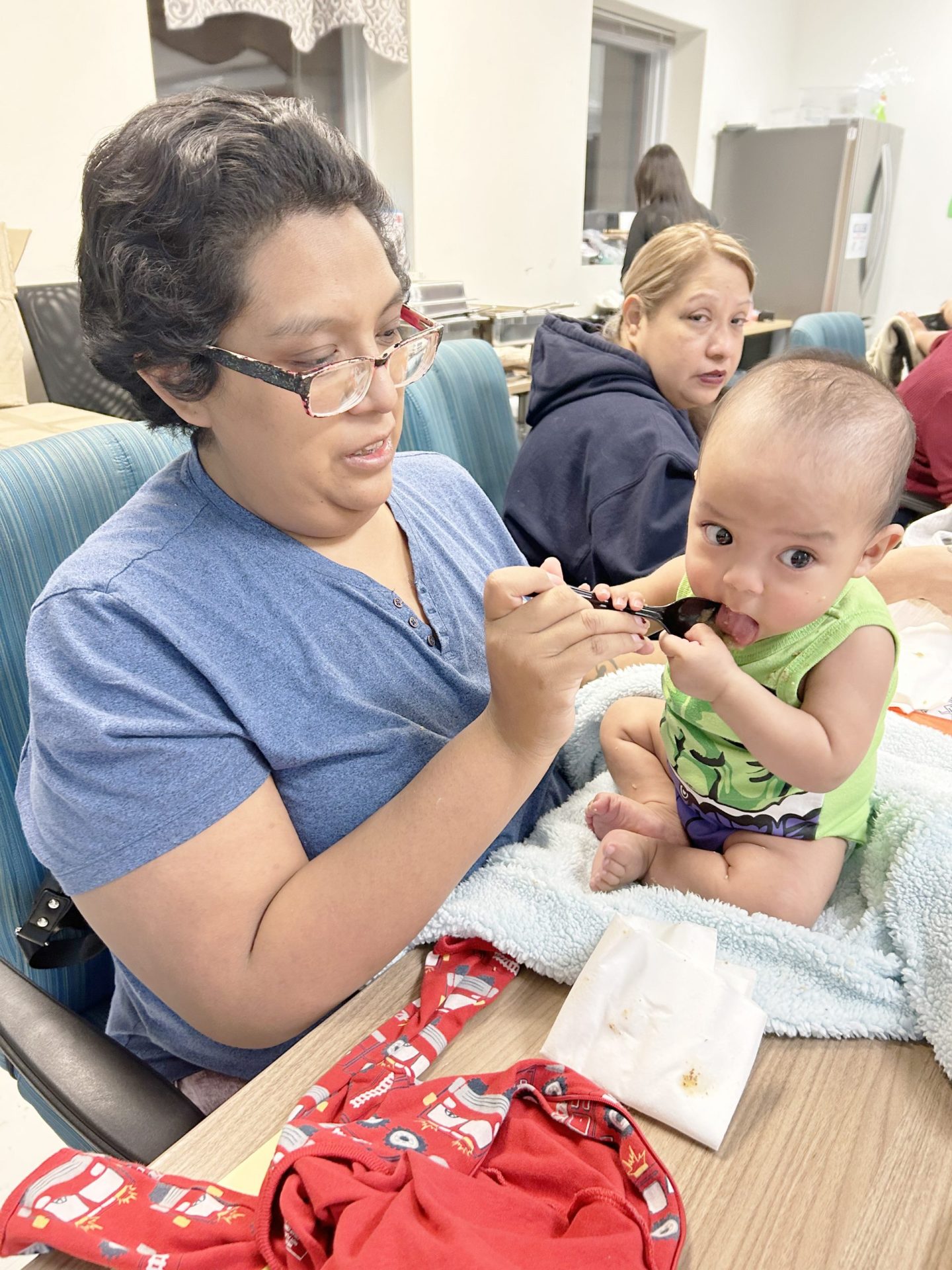VIEWS: 1225
January 4, 2024Traditional Foods for Babies and the ABCs of Safe Sleep
Na:pt biugim? (“Are you hungry?” in O’odham).
This is the question that the Early Childhood Education Center, WIC and SRPMIC Public Health Injury Prevention are asking expectant mothers and ECEC families as the programs work together to show families how to use traditional Indigenous ingredients in baby food.
Families learned about traditional foods for babies at a presentation on December 14 at the ECEC Gathering Place. Materials and resources handed out included information about baby’s first spoonfuls, how to safely introduce peanuts into a child’s diet, and recipe cards for cornmeal mush and bean-squash purée.
According to SRPMIC WIC Community Health and Nutrition Supervisor Maggie Fisher, MS, RDN, CDCES, at about 6 months of age, infants will begin to show signs that they’re ready for solid foods. Every child is different, but some of the signs include being able to control their own head and neck, sitting up alone or with support, bringing objects to their mouth, trying to grasp small objects such as toys or food, and swallowing food rather than pushing it back out.
Examples of traditional foods that the relatives historically ate before contact with Europeans include tepary beans, winter and summer squash, cholla buds, nopales, corn and I’itoi onions.
According to Fisher, traditional foods support local farmers and create a connection to your heritage and relatives for yourself and your baby.
“Traditional foods are a delicious roadmap to healthy eating,” said Fisher. “Rather than relying on highly processed foods that are stripped of their nutrients, flavor and even calories, traditional foods celebrate the abundance of Earth’s offerings, highlighting seasonal and regional produce, hearty recipes and the pleasures of the table.”
Fisher said that tepary beans in particular are high in protein and dietary fiber, which are helpful in controlling cholesterol and diabetes. Butternut squash is relatively low in calories and high in many nutrients, including vitamins A and C, magnesium, potassium and fiber.
As for the parched Pima cornmeal used in one of the recipes, the fiber and sugar makeup makes it a helpful addition, in moderation, to any diet aiming to prevent obesity and maintain a healthy body weight, according to Fisher.
“Cornmeal is relatively high in selenium, which has been found to lower coronary heart disease risk,” said Fisher.
In addition to learning how to make baby food using traditional ingredients, parents and guardians learned about safe sleeping practices for infants, including using cradleboards.
Monte Yazzie, SRPMIC Injury Prevention Coordinator, said that the goal with safe sleeping practices for infants is to emphasize the ABCs of Safe Sleep.
“That means that the baby always sleeps ALONE, on their BACK, and by themselves in their own CRIB,” explained Yazzie.
“This is so important for babies under one year of age. It significantly helps their development and safety while sleeping.”







